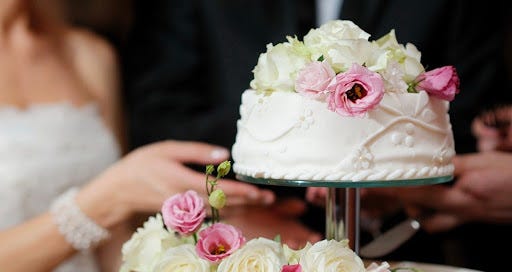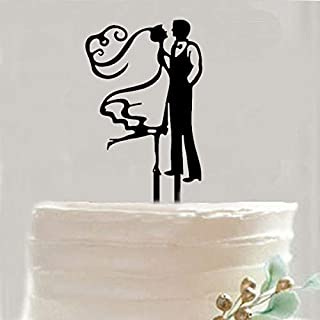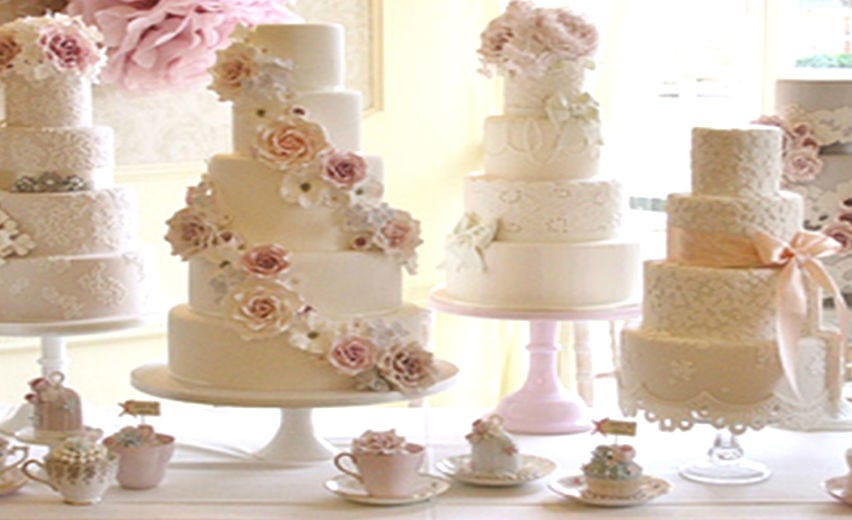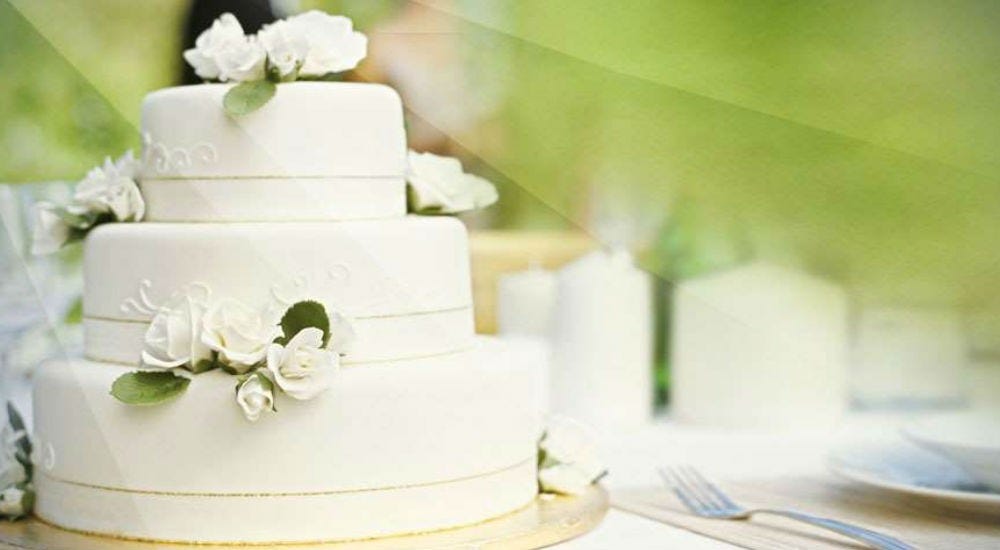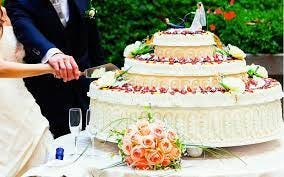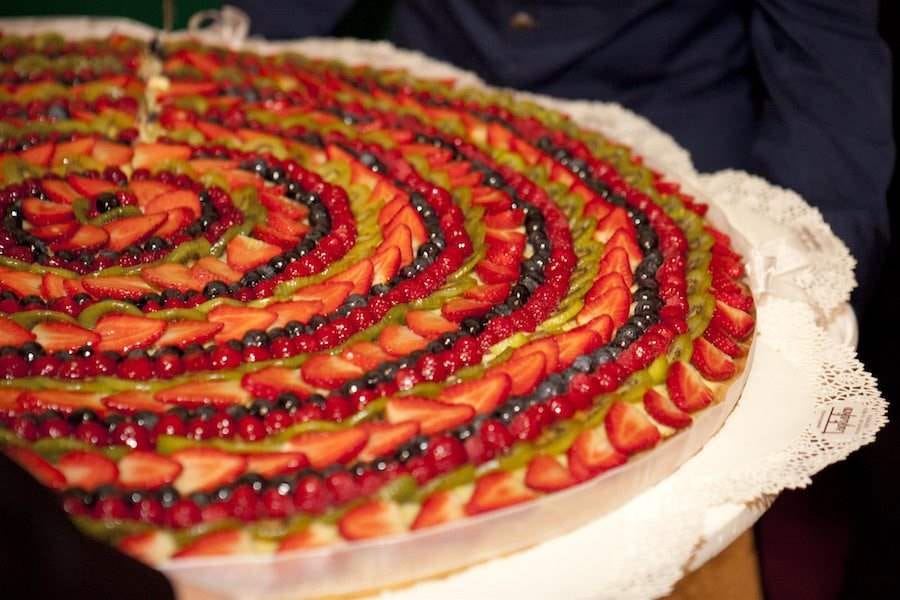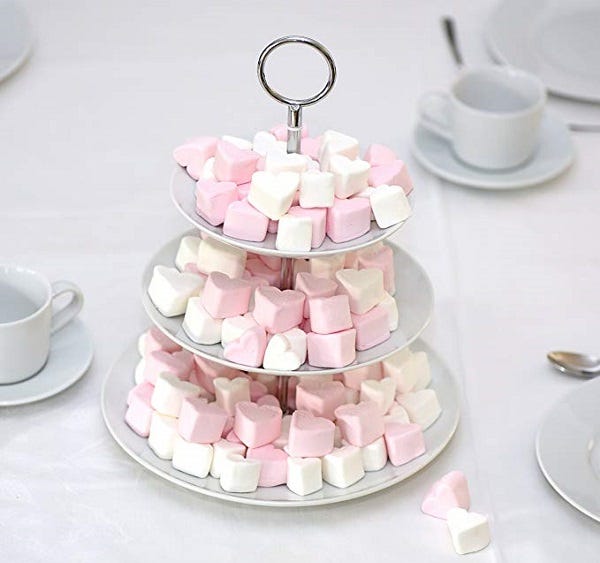In the April 11th issue, I had begun to deal with a topic which, really, extends over four checklist items: 20 Menu and sequence - 21 Wines - 22 Cake - 23 Cocktail.
After finishing the discussion of items 20-21-23, it is now time to tackle item 22: the Wedding Cake.
The wedding cake marks the end of the wedding banquet and represents the apex of the celebrations, together with the toast, that must necessarily take place when the cake is cut. Remember the discussion about sparkling wines?
There are infinite types of cakes that lend themselves to being wedding cakes, but we should remember that, for this occasion, the cake must have some specific characteristics.
Over time, the way of interpreting the wedding cake by pastry-makers has changed a lot, but some fixed points remain: the first of them all is the concept of multi-tiered cake. In relatively recent times, multi-tiered cakes - which until a few years earlier were almost always the classic Saint Honoré with a miniature of the newlyweds on top - have become real works of art created more to be admired than eaten. Therefore, the ideal would be to combine the two aspects: making a cake that is beautiful to look at but also good to eat.
Combining these two aspects is not a trivial matter, as the beautiful wedding cakes are always arranged in a space that becomes a scenic part of the reception and can be admired for the entire time of the wedding banquet (or most of it). Until the moment of cutting and distributing the portions, when all the attention is centered on it. But at that point of the banquet, the cake no longer retains its fragrance and is often a disappointment.
This problem has often been solved by preparing and showing fake cakes, replaced at the last moment with the real one to be cut and, therefore, eaten.
As I often say, you need to get advice, get proposals and then see the cakes (not only in photos) and taste them.
A small note already mentioned some time ago: be careful not to get carried away by emotion and nostalgia, because it often happens that the bride (because she’s the one who really chooses) decides for a particular cake only because it is her favorite cake (perhaps from when she was 3 years old and celebrating her birthday in kindergarten!). However, it is possible that such so beloved cake does not lend itself at all to being made for a wedding banquet. So, be careful.
The proposals to be considered should come from the catering chosen for the banquet, but also from an external pastry chef, as sometimes a different company can take care of the cake (with the relative additional cost). So, the ideal, once again, is to look and try until you are completely sure.
Here are some indications to easily navigate among the proposals:
- The multi-tiered cake: it is the best-known cake and the most impactful from a scenographic point of view. Generally, it consists of three, five or seven floors that can be placed on elevations (therefore separated from each other) or superimposed on each other. Most of the time it is made with sponge cake stuffed with various creams or fruit, with the topping made of whipped cream. It is then decorated with fresh flowers or with sugar paste and ribbons, depending on the style of the wedding. When the tiered cake is made up of a series of directly overlapping cubes or cylinders, it is decorated with ribbons, flowers and leaves in a neoclassical or Renaissance style.
- The so-called "Wedding Cake": it is made up of several layers of sponge cake placed one on top of the other, without spaces. The base is rather narrow and the tops stretched in height are supported thanks to a less soft and more compact dough than that used for the other types of cakes. The outer coating is always in almond paste or sugar paste (unlike the classic tiered cake which often has a whipped cream topping). Embellished with ribbons, cascades of flowers or other elements of cake design, this cake is a real sculpture and is much loved especially for its great scenographic effect. Of course, the external glaze suffers the high temperatures. Precisely for this reason it should not be exposed for a long time before cutting in the summer months, otherwise it will start to "sweat" with the risk of compromising the decorations.
- The hatbox cake: it is a variant of the two previous types of cakes. It is a cake that develops in width and not in height. It consists, indeed, of three levels with a wide round base which, alone, supports the two floors above. It can be decorated with cream or sugar paste, flowers and ribbons.
- The classic or single-tier wedding cake: it is less spectacular than the multi-tiered cake but it always has considerable success, especially if large. It can be of different shapes: round, rectangular, heart, flower, and can be made with a fruit tart base, or millefeuille cake, chocolate cake or classic sponge cake filled with creams, glazed with whipped cream or paste of sugar and decorated with flowers.
Finally, immediately after cutting the cake, desserts or mignon pastries can be served: this is the part I mentioned when I discussed about sweet wines and is often included in menus under "frivolity and sweetness". A fresh fruit buffet can be set up, generally very welcome especially in summer, where you can also find fresh and delicious pastries to enjoy together with the Passito. In autumn and winter, chocolate desserts, biscuits and candied fruit will also be perfect.
This will really be the final part of the wedding banquet because it will take place only after the cutting of the cake.
Until next Sunday.

